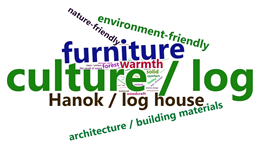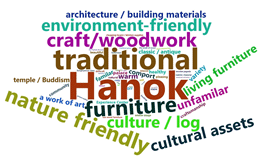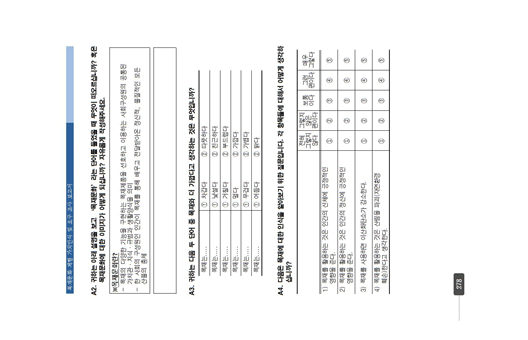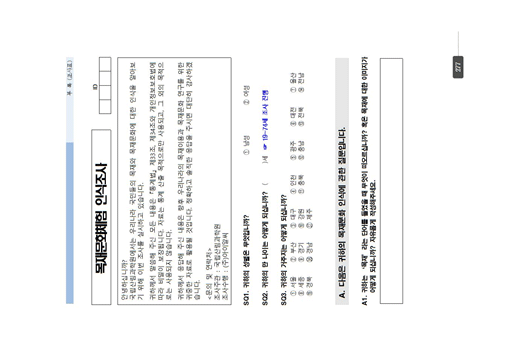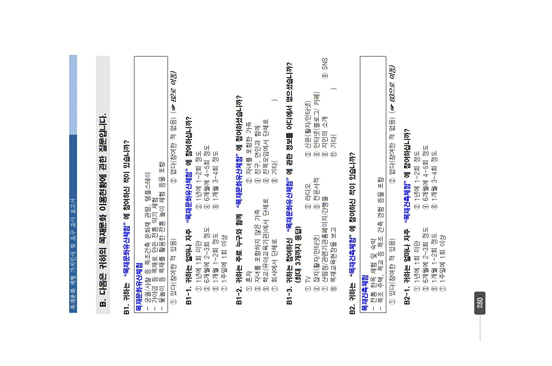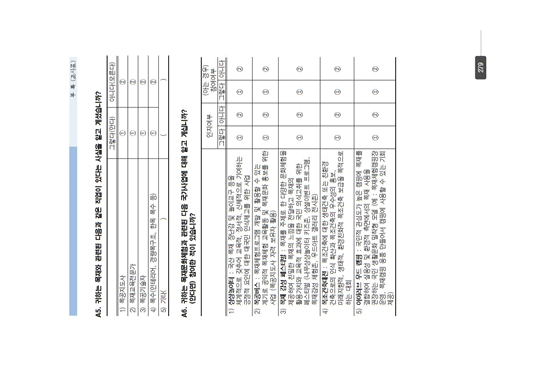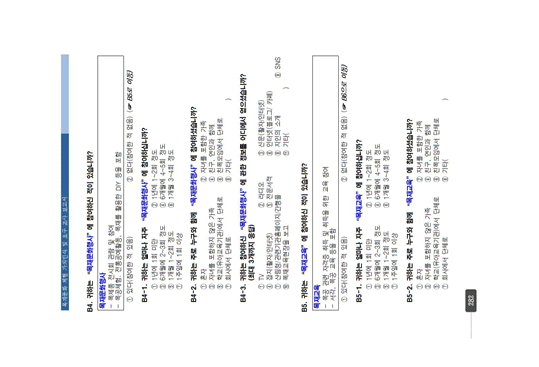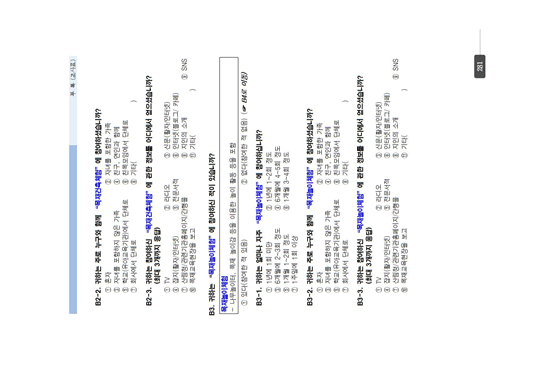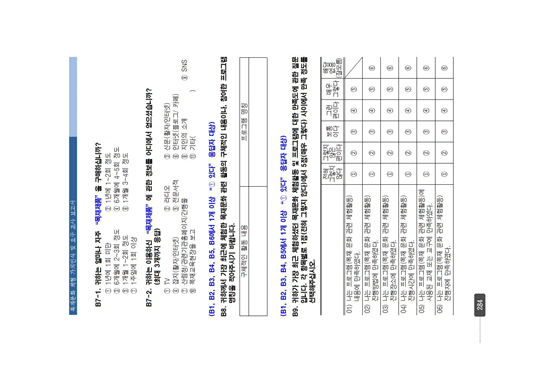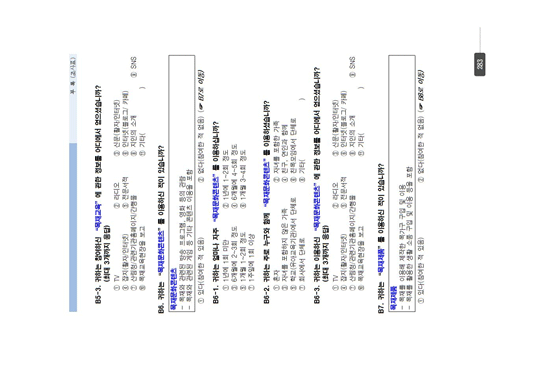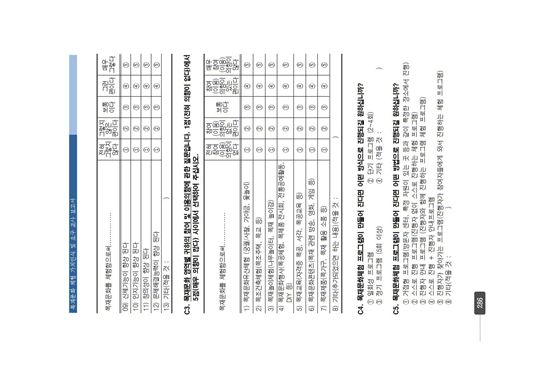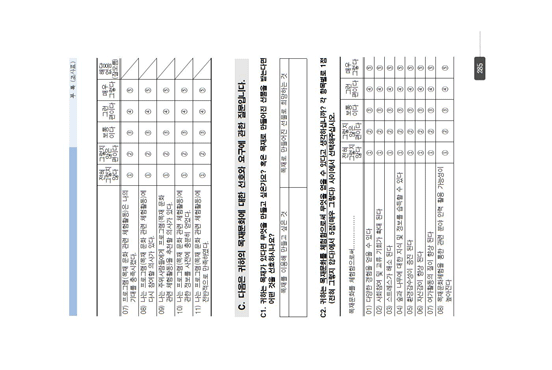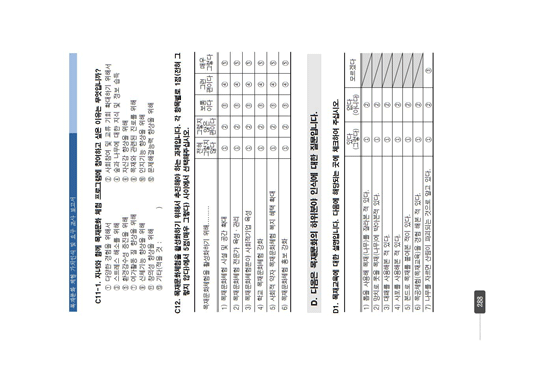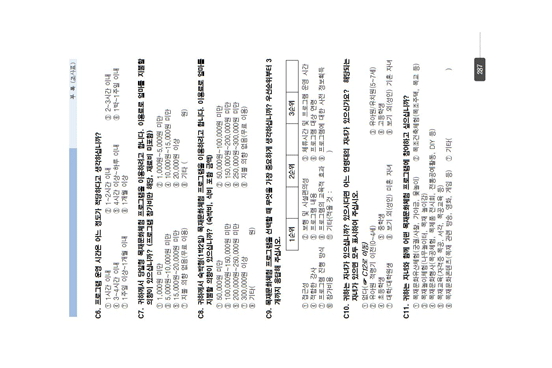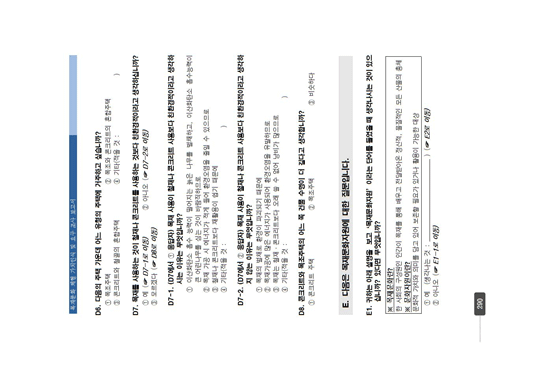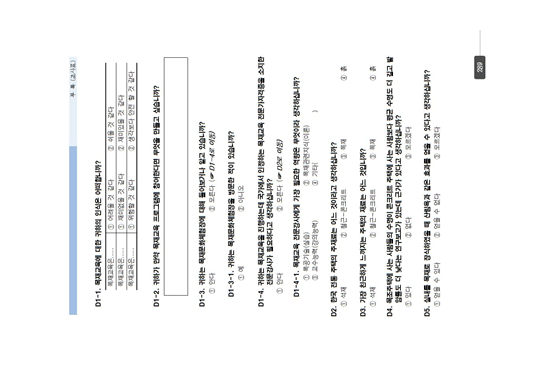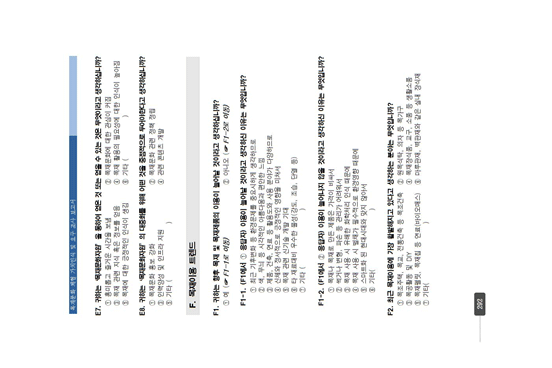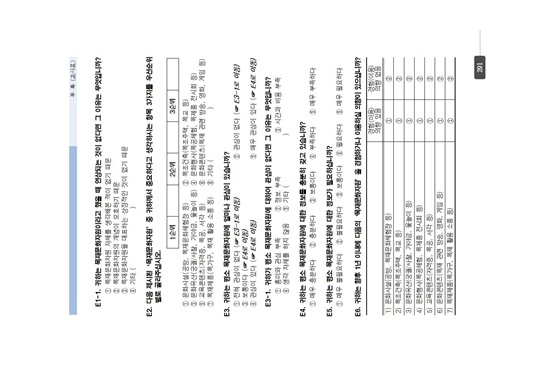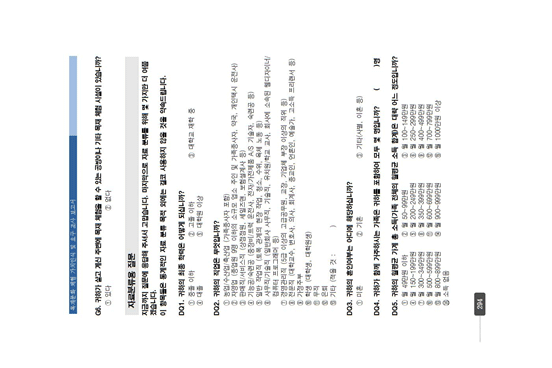1. INTRODUCTION
Wood has been used since the beginning of human civilization for various purposes such as dwelling and daily life. Although it varied by time and region, Korea has formed and developed the culture of utilizing wood as a material for buildings and tools for everyday living. Wood resources in Korea were depleted during the Japanese occupation and the Korean War (Hur, 2005). Moreover, wood resources have been replaced by concrete and plastic due to rapid urbanization and economic growth (Hur, 2005). South Korea has established strong institutions that aim to restore depleted wood resources and has achieved success in reforestation because of decreasing forest dependency owing to economic development (Lee et al., 2017). Currently, the forest area in South Korea is 6,299,276 ha, comprising 63.4% of its land. Moreover, its growing stock per hectare has increased from 5.7 m3/ha in 1953 to 161.4 m3/ha in 2019 (Korea Forest Service [KFS], 2020). The growing stock is defined as the volume of all living trees in a given area of forest. South Korea’s growing stock has been on a steady increase from 63.5 m3/ha in 2000 to 125.5 m3/ha in 2010; however, as of 2009, the growing stock of IV–V age classes increased abruptly and that of II–III age classes gradually decreased, indicating the aging of forests. Consequently, a problem emerged wherein the greenhouse gas absorption rate of trees gradually decreased by 12.4% in 2000, 8.9% in 2010, and 6.4% in 2017.
Many countries have established carbon-neutral strategies for 2050 to cope with the climate crisis and have actively promoted legislation and detailed policies for achieving this goal. A common element of these detailed policies is promoting wood and bio- based materials, which are considered renewable and environment friendly. Increase in the use of wood, along with forestation and management of forests for carbon storage, is one of the tasks for coping with the climate crisis. The KFS (2013) enacted the “Act on the Sustainable Use of Timbers” to promote wood utilization and proposed a wood culture index that quantifies the level of the policy, the social infrastructure, and wood utilization for wood culture promotion. The wood culture index has been on a gradually increasing trend since 2019 (Korea Association of Wood Culture, 2016; 2017; 2018; 2019). As South Koreans have become increasingly interested in environment friendliness and health because of the improvements in living standards, their perception of wood, which is a natural material, is improving such that an increasing number of people opt for wood for the construction of their homes. Although a social environment that favors wood has been formed, people lack opportunities to actually enjoy wood and wood culture. In other words, there is still a lack of public awareness on wood culture and a social infrastructure for it. Thus, increasing the public’s awareness of wood utilization is critical for establishing wood usage as a culture. Moreover, it is necessary to prepare various means for enhancing wood utilization by understanding preferences and interests regarding wood and wood culture.
The Korean Standard Unabridged Dictionary published by the National Institute of the Korean Language (1999) defines “experience” as knowledge and skills acquired by the process of watching, hearing, and doing somethings. According to this definition, experience is an extremely broad concept that includes the experience itself, the process of experiencing, and the results of experiential learning (Kim, 2006). Recently, the public, who are also consumers, desire experience in various forms; consequently, more companies are endeavoring to design and promote experiential marketing (Pine and Gilmore, 1998). This is because compared to traditional marketing, which only emphasizes the characteristics and innovations of products and services, experiences contain the subconscious emotional properties that generally influence public preference to a large extent (Zaltman, 2003).
Therefore, this study conducted a survey to understand the status and demands related to wood culture experience of the public with the aim of enhancing the social and educational values of wood. The items in the survey were categorized into seven categories: awareness of wood culture; use characteristics of wood culture; preference and demand for wood culture; awareness of the sub-fields of wood culture; awareness of wood cultural resources; trends of wood utilization; and wood-related living environment. Detailed questions about each category were included in the survey. The results were divided into four domains (i.e., awareness of wood and cultural experience, awareness of wood cultural resources by type, living environment and wood utilization trend, and preference and demand for wood culture) to conduct the analysis. Based on the survey results, this study analyzed the awareness about wood and cultural experience of the public.
2. MATERIALS and METHODS
The study recruited 2,500 South Koreans aged 19 years or older and conducted the survey on the current status and demands of wood culture experience through an online web panel from October 20 to October 29, 2020. Using the online web panel survey has the advantage of reducing time and costs as it enables constructing various questionnaire designs using additional functions, such as multimedia, and receiving responses immediately (Ryu and Moon, 2014). However, the online web panel survey has its limitations, such as representativeness, sampling, non-response, and measurement errors (Couper, 2000). Sampling, non-response, and measurement errors also appear in traditional surveys; however, representativeness error, which refers to the discrepancy between the target population and the frame defined in the sampling, is primarily found in online web panel surveys (Gim and Kim, 2004). To minimize these limitations, this study recruited respondents from 17 metropolitan cities and provinces according to the sex ratio and age structure of South Koreans using the quota sampling method. The demographic characteristics are presented in Table 1; in terms of gender, the sample comprised 1,264 men (50.6%) and 1,236 women (49.4%). The proportions of participants aged under 29, 39, 49, 59 and 60 above years were 18.4%, 17.4%, 21.0%, 21.6%, and 21.6%, respectively. Table 1 presents the characteristics of the respondents by gender, age, level of education, household income, age of youngest child, and residential district.
Among the respondents selected as samples, 19.5% resided in Seoul, 5.8% resided in Incheon―the special metropolitan cities in the capital area―and 25.7% resided in Gyeonggi-do Province. For the special metropolitan cities that are not in the capital area, 6.6%, 4.7%, 2.9%, 2.8%, 2.2%, and 0.6% of the respondents resided in Busan, Daegu, Daejeon, Gwangju, Ulsan, and Sejong, respectively. For the provincial areas, 2.9%, 3.0%, 3.9%, 3.4%, 3.4%, 5.0%, 6.3%, and 1.3% of the respondents resided in Gangwon, Chungbuk, Chungnam, Jeonbuk, Jeonnam, Gyeongbuk, Gyeongnam, and Jeju, respectively. In terms of level of education, 67.5% of the respondents were university graduates, followed by high school graduates and below (18.4%), post-graduate degree and above (9.4%), attending university (4.4%), and middle school graduate and below (0.2%). The main occupation of respondents was office/technical workers (37.7%), followed by homemakers (14.6%), self-employed (7.7%), professional (7.1%), unemployed (6.9%), sales/service (5.8%), general workers (3.6%), technicians/skilled workers (3.1%), retired (2.8%), and agricultural/fishery/livestock workers (0.8%). The married and unmarried respondents comprised 63.5% and 31.2% of the sample, respectively, whereas others (i.e., widowed and divorced) comprised 5.4%. The number of people living together in a household was four (34.6%), three (28.1%), two (18.6%), and one (11.1%). Family income was KRW(Korean Won) 2.00–2.49 million (8.5%), KRW 2.50–2.99 million (7.8%), KRW 3.00–3.49 million (9.0%), KRW 3.50–3.99 million (7.6%), KRW 4.00–4.99 million (13.4%), KRW 5.00–5.99 million (14.3%), and KRW 6.00–6.99 million (9.7%).
This study conducted a survey on the categories of awareness of wood and cultural experience, awareness of wood cultural resources, and wood-related living environment and trends of wood utilization with the goal of analyzing the preference and demand for wood culture (Fig. 1). The main contents of the survey regarding the status and demands related to wood cultural experience were grouped in the aforementioned seven major categories. Table 2 presents the details of each major category. This study analyzed the awareness of wood and cultural experience based on the results from the items “free association image of wood and wood culture,” “awareness of wood,” “awareness of wood- related occupations,” and “awareness and participation in major projects related to wood cultural experience” that are under the first category; “awareness for wood and cultural experience” and “awareness and participation in experience related to wood education” under the fourth category; and “awareness for wood culture sub-field,” which are the first step among the whole study to analyzed preference and demand for wood culture presented in Fig. 1.
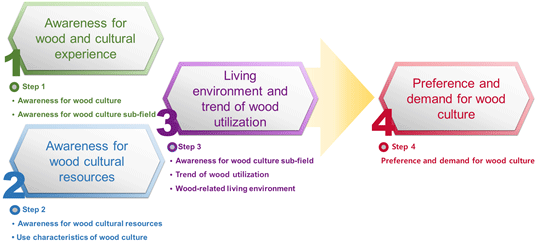
3. RESULTS and DISCUSSION
This study collected 2,500 responses as multiple-choice answers regarding images that come to mind when hearing the word “wood.” The results were culture (utilized wood) (32.2%), furniture (21.3%), Hanok/log house (13.1%), warmth (8.6%), and environment friendly (8.3%). Although the image of “wood” was mostly positive, negative responses also emerged, such as fire (1.2%), logging (0.6%), difficult to manage (0.6%), and expensive (0.4%). This study presented the definition of wood culture as common values, knowledge, norms, and lifestyles of social members who prefer and use wood products and realize the various functions of wood (KFS, 2013) as suggested in Article 2 (5) of the “Act on the Sustainable Use of Timbers” as well as the definition that describes it to be the sum of all spiritual and material products that people, who are members of a society, learned and received through wood. Subsequently, 2,500 responses to multiple-choice questions regarding images that emerge from the definitions were collected. The results were Hanok (12.9%), traditional (9.7%), furniture (7.2%), nature friendly (7.1%), craft/ woodwork/workshop (6.4%), and environment friendly (5.6%). The negative responses among them were unfamiliar (3.9%), difficult (0.8%), expensive (0.5%), and fire (0.4%). Among the negative responses, perceptions of wood utilization such as logging, expensive, and unfamiliar should be changed through continuous promotions. Alternatively, opinions such as “fire” and “difficult to manage” can be addressed through various studies conducted in the field of wood engineering, such as the development of non-flammable wood products through fireproof and flame-retardant treatments (Park et al., 2020; Park et al., 2021) and the increased effects of wood preservation treatments (Lee et al., 2020; Cahyono et al., 2020; Priadi et al., 2020). Images regarding wood and wood culture were visualized as word clouds according to the response ratio (Fig. 2 and 3).
Among the images for wood and wood culture, the common responses that were above 5% were those pertaining to the use of wood as a material, such as a furniture, Hanok, log house, architecture, and building materials. Environment friendly, nature friendly, forest, and warmth were found to be a frequency above 5% and 2% in the images related wood and wood culture, respectively. Opinions related to cultural heritage, such as tradition and cultural assets, were more than 5% in relation to wood culture and less than 1% in relation to wood. Although 32.2% of the respondents indicated log, lumber, and culture as images associated with wood, the public retained images such as materials, cultural heritage, and environment friendly in relation to wood and wood culture despite presenting tradition and cultural assets as options for images associated with wood culture.
Wood has various patterns and colors dependent on the species, which can give psychological stability, warmth, and coziness to humans (Parkarinen, 1999). This study investigated what respondents felt to be a better description of wood after presenting six pairs of contrasting words. The pairs of keywords were warm– cold, friendly–unfamiliar, soft–rough, close–far, light–heavy, and bright–dark. Among them, the words friendly (91.3%), warm (91.1%), closer (81.4%), bright (75.8%), soft (69.2%), and heavy (58.6%) were deemed closely related to wood. In summary, warm and friendly exhibited high response rates. However, younger respondents tended to frequently respond with cold and unfamiliar. Male respondents pointed to soft, light, and bright more frequently than did the female respondents, as did the older respondents compared to the younger ones. Specifically, in the case of soft and light, the response rate among respondents aged 60 years and older was 83.5%, whereas that of respondents aged 29 years and below was 50.3%, indicating a large difference.
The study evaluated the public’s awareness of wood utilization through the extent to which they agreed with four statements: “Utilizing wood exerts a positive impact on the human body,” “Utilizing wood exerts a positive impact on the human mind,” “Utilizing wood decreases carbon dioxide emission,” and “Utilizing wood destroys forests (the natural environment).” Items were rated using a 5-point Likert scale (1 = strongly disagree, 2 = disagree, 3 = neither agree nor disagree, 4 = agree, and 5 = strongly agree). Based on the mean of the scores for each question, awareness regarding the positive effects of the use of wood on the body and mind were 4.13 each, which was higher than the awareness of carbon dioxide reduction (3.53) and forest destruction (3.31; Table 3). The results that showed positive effects of wood utilization on the body and mind were similar to the results of the surveys conducted in South Korea, Germany, China, and Japan in which 80% responded that there were positive effects of wood on the body and mind (Lee et al., 2020) as well as the results of previous studies that found spaces composed of wood positively influenced physical and mental health (Wolf, 2005; Watchman, 2017). The effect of wood on the human body was scientifically examined to be from the antioxidant and antibacterial effects of its essential oils (Ham et al., 2020; Ahn et al., 2021; Lee et al., 2021), of which the public was highly aware. Questions on carbon dioxide reduction and forest destruction were used to evaluate the public’s awareness of the carbon storage ability of trees in response to the carbon-neutral era. Considering that 53.0% and 45.2% respondents agreed to two contradictory questions, it is judged that there is a need to promote the awareness that utilizing wood is effective for storing carbon rather than destroying forests. Trees absorb carbon dioxide from the air through carbon assimilation at a young age, when their growth is most active. They can then be harvested as wood, when their absorption ability is reduced, and can be used for various purposes. In this manner, promoting the concept that assimilated carbon from the air is stored in processed wood, that wood delays the emission of carbon, and that wood acts as a carbon storage material is crucial (Kim et al., 2019).
This study evaluated the awareness about four occupations related to wood: woodwork instructor, professional wood instructor, woodwork technician, and carpenter (e.g., interior, light-weight wood structure, and Hanok carpenter). Among the four occupations, the recognition rate for the carpenter was the highest (95.5%), followed by woodwork technician (86.1%), woodwork instructor (34.4%), and professional wood instructor (24.4%).
In the standard classification of occupation within the standard industrial classification in South Korea, a manufacturer falls under Level 1 in relation to wood; two fields (wood and wood product manufacturer) belong to Level 2; four fields, such as the lumbering and wood processing industry, are categorized under Level 3; nine fields, such as the lumbering and wood processing industry, are grouped under Level 4, and 19 fields, such as the lumbering industry, fall under Level 5 (Statistics Korea, 1996). The professional wood instructor system, which is operated by KFS based on the revision and implementation of the “Act on the Sustainable Use of Timbers” in 2020, is still in its early stage. Moreover, there is a lack of professional wood instructors. Thus, the public perceives such occupations related to wood, as demonstrated by the Korean standard classification of occupation, as skilled workers, such as carpenters and woodwork technicians.
This study investigated the public’s awareness of and participation rate in five major projects (i.e., Imagination Playground, Woodworking Bus, Wood Sensitivity Festival, Wood Architecture Contest, and I Love Wood Camping), which are implemented in relation to the wood culture experience at a wood-specialized culture institution. These projects aim to improve the public’s awareness of wood and promote wood culture by providing opportunities for various cultural experiences under the theme of wood. Among the major projects related to the wood culture experience, the Wood Architecture Contest was the most recognized (47.2%), followed by Imagination Playground (34.2%), Wood Sensitivity Festival (25.3%), I Love Wood Camping (21.5%), and Woodworking Bus (17.5%). The results for participation rate are Woodworking Bus (45.1%), Wood Sensitivity Festival (40.5%), Imagination Playground (39.9%), I Love Wood Camping (38.3%), and Wood Architecture Contest (28.1%). Wood Architecture Contest is an annual contest held to increase awareness of wood architecture as environment friendly and promote its excellence. Although it is more widely known compared with the other main projects, the participation rate was low, because the opportunity to participate was limited to those who were not designers or constructors of wooden structures. Public awareness about the Wood Sensitivity Festival, I Love Wood Camping, and Woodworking Bus as events was low as they were more like pop-up events than a project that was hosted regularly. However, approximately 40% of individuals who are aware about these events participated. Experience can be categorized into diverse elements, such as entertainment, education, getaways, and esthetic sense according to the degree of individual participation and the environment (Pine and Gilmore, 1999). Wood culture experience, which is a project promoted by wood culture-specialized institutions, is conducted to mainly target educational experiences among the aforementioned four elements, which is a shortcoming. As people who experience culture enter a post-modern society, they value entertainment factors, such as fun and enjoyment, more prominently than the uniqueness or educational factors of culture (Rojek, 2000; Han, 2006). Many scholars have proposed that introducing the concept of experiential marketing by diversifying content is necessary for improving public awareness of wood, the objectives of the main projects promoted by wood culture-specialized institutions, and the provision of more people with opportunities to experience wood culture.
This study investigated participation in wood education and the experience of processing wood using saws, hammers, planers, sandpaper, and adhesives. The results demonstrated that 30.0% of the respondents participated in wood education, including woodworking experience. The experience related to wood processing was in the following order: hammering nails into wood (81.7%), using sandpapers (80.9%), sawing wood (65.5%), gluing wood with adhesive (63.5%), and using a planer (39.0%). It is judged that people obtained fewer opportunities to use planers because planers are wood processing machines, in contrast to hand tools such as saws and hammers. The majority of people who have experience in woodwork or do-it- yourself may purchase ready-made wood products composed of lumber, laminated boards, and plywood; cut them using a saw; sand them; and glue them with nails and adhesive.
The responses on participation in wood education and the question “I know that logging destroys forests” showed that 66.9% of the respondents agreed with the statement. This question was similar to “I think that using wood destroys forests (the natural environment)” under awareness of wood utilization. Given that 45.2% agreed to forest destruction is due to wood utilization, while 66.9% agreed to forest destruction is due to logging, the study confirmed that the public negatively perceived felling, as recently presented by the media.
The participants selected one of two conflicting perceptions about the difficulty, fun, and safety related to the wood culture experience. Many responses were “It seems hard” (58.4%) compared with “It seems easy” (41.6%) and “It seems fun” (87.3%) compared with “It does not look fun” (12.7%). Other responses were “It looks safer than I expected” (67.1%) compared with “It looks dangerous” (32.9%). The older respondents tended to respond with “It seems easy” and “It looks safe.”
This study investigated what the respondents would make if they participated in a wood culture experience program in the form of subjective responses. The results were visualized and presented using a word cloud according to the response ratio (Fig. 4). The response rate was in the following order: chair (17.3%), furniture (13.3%), table (10.3%), desk (8.4%), and living items (8.0%). Furthermore, the responses can be classified into three categories: furniture (chairs and tables; 80.7%), living items (chopping boards and toys; 12.1%), and buildings (wooden houses and Hanok; 5.2%). Moreover, 2% of the respondents indicated that they did not want to make any items. The items that the majority of respondents wanted to make through the wood culture experience only slightly differed from images associated with wood and wood culture.
The establishment of a wood culture experience center in South Korea started in 2005 with the objective of promoting wood culture among people. As of October 2020, 37 centers are operational (Han et al., 2021). This study investigated whether the respondents were aware of the wood culture experience centers and whether they visited them. The study found that 23.2% of the respondents were aware of these centers and 49.8% of those who were aware visited them. Older respondents tended to be more aware. The results revealed that respondents in their 30s visited them most frequently and tended to participate in the programs more when the youngest child was an elementary school student. Thus, the study inferred that that although younger people knew about the centers relatively less, majority of those who knew about them tended to visit the centers with their children.
This study investigated whether the respondents considered that conducting wood education, including wood culture experience, would require a professional instructor with a nationally recognized professional wood education license. The finding indicated that 81% reported that a professional instructor is necessary. The respondents who said that a professional instructor on wood education is necessary were asked which would be the most necessary competency for the instructor among woodworking skills (practice), teaching ability (lecturing ability), and wood-related knowledge (theory). The results indicated that woodworking skills (practice) was the highest (73.2%) requirement, whereas teaching ability (lecturing ability) (16.3%) and wood-related knowledge (10.0%) were relatively low. When the respondents were younger, they tended to indicate that teaching ability (lecturing ability) is necessary. Conversely, when the respondents were older, they tended to indicate that wood-related knowledge (theory) is a requisite.
The results regarding the competency required for professional instructors for wood education indicated that the public perceived wood culture experience as a practice similar to woodworking instead of education, which include theories about wood, because the occupation awareness of carpenters and woodwork technicians was much higher than that of woodwork instructors and professional wood instructors in relation to awareness of wood-related occupations.
4. CONCLUSION
A survey was conducted on the status and demands for wood culture experience with the goal of preparing plans for expanding wood utilization and establishing wood culture by improving public awareness. This study presented the results of the free association images of wood and wood culture, perception of wood utilization, awareness of wood-related occupations, awareness of major projects related to wood culture, experience of wood culture, and visits to wood culture experience centers to analyze the perception of the public about wood and cultural experience. The public reported images related to material, cultural heritage, and environment friendliness about wood and wood culture and did not particularly distinguish between the two. More than 50% responded that they considered that wood utilization will influence the body and mind in a positive manner but that logging for wood utilization may lead to forest destruction. The public recognized that being a technician or skilled worker was an occupation related to wood, and woodwork technique was the most frequently recognized competency required for professional wood instructors. The respondents indicated that they would like to make furniture, living items, and buildings through the wood culture experience program, which was similar to the images associated with wood and wood culture. Awareness of the wood culture program, wood culture experience centers, and major projects related to wood culture was approximately 30%, which is relatively low. To decrease the negative perceptions about wood and wood culture, it would be necessary to emphasize the positive effects of wood materials by activating the carbon storage labeling system for wood materials, which can act as carbon storage, and promoting wood utilization, such as the “I Love Wood Campaign.” Moreover, the wood culture index should be quantified through a continuous monitoring of the wood utilization of the public and the promotion of a nationwide expansion and utilization. Additionally, diverse content should be developed combined with various elements of experience, such as entertainment, education, getaways, and esthetic sense, by introducing the concept of experiential marketing into the wood culture experience.

